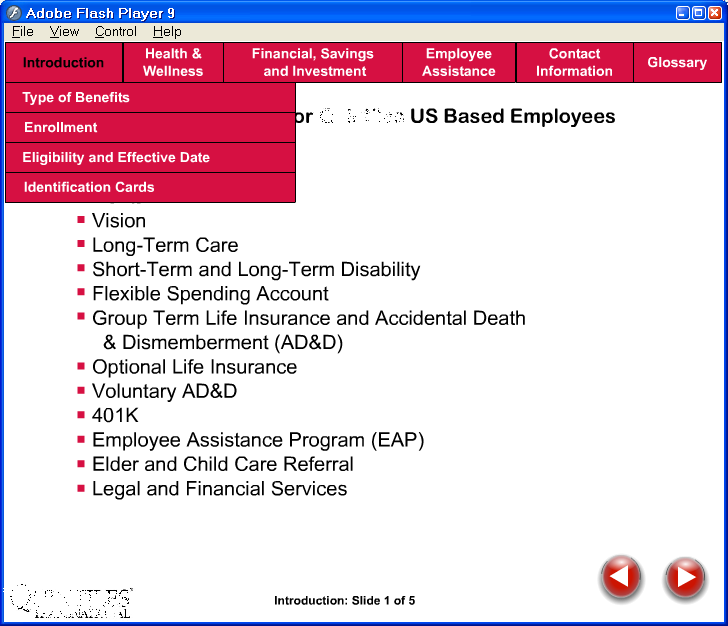Current Work
Power Systems:
I worked closely with dispatchers and management to design Situation Awareness-Oriented prototype concepts for personal workstations and video wall systems for clients such as PJM and EPRI.
Design Summary:
The flash sample below demonstrates some of the methodologies used during analysis and design. Please note that due to client confidentiality the images have been edited to mask or blur details.
Warfighter Machine Interfaces:
Member of design team using human factors design guidelines and Situation Awareness-Oriented design principles to create Warfighter Machine Interface (WMI) UI Designs for integrated planning and mission execution as part of the US Army's Future Combat program.
Design Processes Used:
Please note that due to the restrictions of the U.S. Army, the specifics pertaining to the designs cannot be disclosed.
A flyer is available for public release.
Consulting Work
Flash-based Orientation Training:
Design Summary:
Provided flash-based training development for a new-hire orientationt raining program. Client requirements for actionscript based functionality including: drop-down menus, glossary-term roll-overs, and text motion.
Please note that due to client restrictions the sample image has been edited to maintain confidentiality.

North Carolina State University
Dissertation Research:
Design of Training for Operators of a Supervisory Control in a High-Throughput Biological Screening System.
Design Summary:
The purpose of this study was to develop a systematic approach to the translation of Cognitive Task Analyses (CTAs) into a Situation Awareness (SA) based training program for operators of High-throughput (biological) screening (HTS) systems. This study combined information requirements from a Goal Directed Task Analysis (GDTA) and system resource requirements identified through Abstraction Hierarchy (AH) models to establish content on HTS processes. This analytic process resulted in the development of two versions of HTS training programs: a prototype electronic training program and an electronic traditional training program. An evaluation occurred comparing these programs to the traditional lab training provided to expert operators of an HTS system. Results provided preliminary evidence that a CTA-based training program can improve operators' knowledge structures beyond on-the-job training. Finally, a set of general guidelines for the design of the CTA-based training programs were developed, which included methods for structuring the components of the training program to support the three levels of SA. The flash sample below demonstrates the methodology used during the training scenarios for the supervisory control operators.
Class Projects and Research:
I've done several usability and training projects based on the North Carolina Immunization Registry.
Design Summary:
Further samples of the training and usabilty methods from this work are also available within a depository NCIR Site
I've also worked on several projects in collaboration with Dr. Michael Wolgalter in the Psychology Department here at NCSU.
Design Summary:
My most recent work was on Consumer Assessments of Health Information Publications versus Web sites. Sample images of the experimental pages are presented in research folder.
East Carolina University
My master's thesis topic:
Interface elements and review question formats in a mastery learning computer-assisted instruction environment.
Design Summary:
The basis of my thesis was to test the effects of two embedded review question formats and the application of web design guidelines in a computer-assisted mastery learning course in developmental psychology.
Students used either a branching review question format that redirected them to relevant portions of the study module after incorrect answers or a linear format that only provided the correct answer and then continued to the next review question.
Both electronic study modules incorporated the same web design usability guidelines, and questionnaire data was used to examine the relationship between students’ perceptions of the usability of our electronic study modules and their performance on the mastery quizzes.
University of Pittsburgh
Senior Capstone Project:
My Design Team developed a medication dispenser from requirements analysis to initial prototype.

